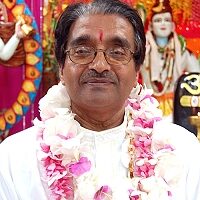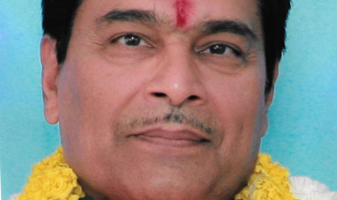Extracted from speeches by Pt. Gyandeo Persad, Spiritual Leader of SWAHA Sukh Shanti Bhakti Mandali and Pt. Maniedeo Persad, Spiritual Leader of SWAHA Sri Raam Dhaam
SWAHA International is the creation of the late Shankaracharya, Pt. Hari Prasadji, its founding father, and Maataaji, the late Shrimati Chandrawti Prasad. The vision they stood up for and represented has been transmitted through the generations to create the ethos of SWAHA. The values they cherished and taught remain a cornerstone of SWAHA’s values today: respect, unconditional care for others, love of country, Hinduism, India and Indian culture. During his life, the Shankaracharya made more than 28 pilgrimages to India that would have nourished his faith and fervour in his beliefs. As we commemorate his birth anniversary on December 11, we honour his monumental spiritual legacy.
The Shankaracharya believed in charity (and that eventually led to the establishment of the SWAHA Social Services arm). Every temple and institution of SWAHA was built, in part, with the financial contributions of the Shankaracharya. In fact, even before SWAHA was formed, the Gyaan Deepak Kirtan Mandali was completed with funds that he provided. He represented, together with Maataaji, the capacity for hard work and a belief in education as an agent of change and a roadmap to achieve independence.
~ Pt. Manideo Persad
In the Bhagavad Gita, chapter 9, verse 26, Shree Krishna Bhagavan says:
Patram pushpam phalam toyam yo me bhaktyaa prayachchhati
Tadaham bhaktyupahritam ashnaami prayataatmanah
“If one offers to me, a leaf, a flower, a fruit or water with devotion,
I will accept that offering of love from that pure-hearted devotee.”
The Shankaracharya offers a deeper meaning to this verse: Patram means ‘leaf’. He explained that in ancient India, scriptures were made from the bhojpatra tree, a tree that grows in the Himalayas. Patram in this instance means the scriptures written on leaves. Thus, those who read the scriptures, understand the scriptures and learn the scriptures, they are worshipping Me.
Pushpam means ‘flowers’. Pushpam also means the flowering of the crown chakra (an energy vortex within the body), the chakra at the top of the head, the sahasrara chakra. The chakra, depicted as violet in colour, is the 1,000-petalled lotus flower. We must offer that flower to the Supreme Lord. We ascend on that spiritual journey by starting from the muladhara chakra (chakra at the base of the spine) and proceed upwards. Thus, we start from Ganeshji to Gauri Maataa, then Shivaji and Krishnaji. That is the journey that leads us up to the sahasrara chakra, the flower we must offer, the highest chakra in the body.
Phal means ‘fruit’. This is not just apples, grapes and pears. In chapter 3, verse 28, Bhagavan Shree Krishna said: “Who offers all actions to me, the result of your actions are indeed blessed.” So we have to offer the fruit of our actions to Bhagavan.
Toyam is water. Devotees like Shabari in the Ramaayan washed Shree Raam’s feet with the tears of emotion from her eyes. This is the philosophical meaning of that offering.
Shankaracharya always urged devotees to read, listen to and know the scriptures, engage in spiritual practice and raise their spiritual energy to the highest chakra. His sage advice was to offer all actions to God, and do so with devotion and love. An intellectual person can give meaning to a katha (story), but only a bhakta (devotee) can experience divinity.
~ Pt. Gyandeo Persad



